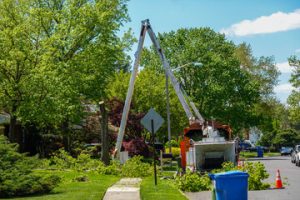Nature’s rhythm is delicate, and tree removal has become part of maintaining its balance. The act may seem destructive, yet it often supports renewal and safety. As cities expand and climates shift, tree management evolves into a science guided by responsibility. The new era of tree removal is defined by awareness, precision, and environmental mindfulness.

Tree Removal Worcester is no longer about cutting down trees blindly. It involves strategic planning, ecological assessment, and long-term sustainability. Experts now evaluate every action through both environmental and structural lenses. The goal is to harmonize human progress with natural preservation.
One of the major transformations in this field lies in technology. Advanced sensors, drones, and data systems are now used to assess tree health. These tools measure stress levels, disease, and root stability without invasive testing. The information ensures that only necessary removals are done, minimizing ecological disruption.
Tree removal has also become essential for safety in both urban and rural settings. Aging or diseased trees can collapse unexpectedly, posing threats to property and lives. Strategic removal prevents accidents and maintains the integrity of surrounding vegetation. It’s not an act of destruction but a measure of protection.
The process begins long before the first branch is cut. Specialists analyze soil composition, drainage patterns, and nearby wildlife habitats. This pre-assessment identifies which trees can be saved and which must go. Such careful planning reduces environmental shock and maintains ecosystem health.
In the new model of environmental management, even tree removal contributes to conservation. Replanting and relocation are common follow-up practices. Removed trees are often replaced with younger, disease-resistant species. The process mirrors nature’s cycle of decay and rebirth, where endings lead to new beginnings.
Climate adaptation is another emerging factor influencing tree removal decisions. Some tree species can no longer survive in regions affected by temperature shifts and drought. Removing these vulnerable trees allows ecosystems to adapt naturally by introducing resilient varieties. This adaptive approach strengthens forests against environmental stress.
Urban areas face unique challenges in tree management. Space is limited, and roots often interfere with underground utilities or infrastructure. Tree removal in these settings requires surgical precision to avoid damaging structures. It becomes a collaboration between engineers, environmentalists, and arborists.
Ecological responsibility now extends to the disposal process as well. Removed trees are rarely wasted. Their wood can be repurposed into furniture, mulch, or even renewable energy material. This cycle of reuse gives a second life to what once stood tall in the landscape.
Noise pollution and air quality considerations are also transforming removal methods. Equipment now operates with reduced emissions and quieter engines. This advancement lessens community disturbance and aligns with sustainable development goals. It shows that innovation can coexist with care for nature and people.
Public awareness has grown around the ethics of tree removal. Communities often participate in consultation before major projects begin. People seek assurance that removals are justified, environmentally sound, and compensated with replanting. This participatory approach nurtures trust and shared responsibility.
Tree removal now often includes biodiversity mapping. Specialists record the presence of insects, birds, and other organisms living within the canopy. Relocation programs ensure that displaced species are given alternative habitats. This approach recognizes trees as ecosystems, not just individual organisms.
In regions prone to storms or natural disasters, preventive removal has become critical. Weak or leaning trees are identified early to reduce the risk of falling debris. Removing them strategically protects both human life and remaining vegetation. Prevention, in this sense, becomes the highest form of preservation.
Technological innovation has introduced predictive analytics into the field. Data modeling can now forecast when a tree is likely to become unstable. By analyzing root growth, weather exposure, and disease progression, removals can be planned ahead of failure. This foresight reduces costs and environmental losses.
Soil rehabilitation has become a standard post-removal practice. Once a tree is taken down, nutrients and microorganisms in the soil are replenished. Composting and organic fertilizers restore fertility, preparing the ground for replanting. This ensures that the ecosystem continues to thrive even after disturbance.
Aesthetic considerations also influence modern tree management. Landscapes are designed to balance open space and vegetation density. Removing selected trees can improve light penetration and soil health for surrounding plants. The result is a more vibrant, sustainable green environment.
Legal frameworks surrounding tree removal are tightening worldwide. Regulations require permits, documentation, and environmental reports before approval. This oversight protects forests and ensures accountability among contractors and property owners. Compliance strengthens the integrity of the practice and deters reckless deforestation.
Cultural attitudes toward trees have also evolved. Many societies view them as living symbols of memory, growth, and connection. Tree removal, therefore, carries emotional weight and demands sensitivity. Rituals or memorial replanting often accompany removals to honor the life being taken.
Tree removal specialists now undergo multidisciplinary training. They study not only forestry but also ecology, engineering, and environmental ethics. This broad knowledge allows them to approach each project holistically. Their expertise turns a once mechanical task into an intelligent form of stewardship.
The economic aspect of tree removal is equally significant. Healthy trees increase property value, but neglected ones can become liabilities. Removing hazardous trees prevents costly damage and legal disputes. It transforms risk management into a form of investment protection.
Innovations in tree preservation now coexist with removal practices. Some technologies allow partial trimming, bracing, or root management instead of full removal. This hybrid method extends the lifespan of trees without compromising safety. It demonstrates a preference for balance rather than elimination.
The role of community education has become crucial. Public seminars, environmental campaigns, and urban gardening programs teach residents about responsible tree care. This awareness reduces unnecessary removals caused by misunderstanding or neglect. Knowledge turns citizens into guardians of their natural surroundings.
Tree removal, paradoxically, plays a role in reforestation efforts. Diseased or invasive species are removed to give native plants room to grow. This controlled disturbance helps ecosystems recover their natural diversity. It’s an intentional step toward ecological healing.
Sustainable disposal methods are reshaping waste management. Wood chips, compost, and biomass fuel derived from removed trees minimize environmental impact. Even sawdust can be reused in agricultural processes or as eco-friendly insulation. The focus is on creating zero waste from natural material.
The psychological side of tree removal is often overlooked. Many people form emotional bonds with trees, seeing them as companions or landmarks. When removal becomes necessary, communication and transparency ease the transition. Respecting sentiment ensures that progress doesn’t erase emotional roots.
Environmental monitoring continues long after removal. Specialists track soil conditions, regrowth patterns, and wildlife adaptation. The data collected helps refine future removal practices and ecological planning. Every project becomes part of a learning cycle for better sustainability outcomes.
Remote sensing technology is expanding the precision of environmental assessments. Satellites and aerial mapping now provide tree canopy data at massive scales. This technology identifies areas of vulnerability and helps governments prioritize conservation zones. It bridges modern science with ecological preservation.
Tree removal also intersects with climate resilience planning. By managing tree density strategically, communities can reduce wildfire risks and improve air circulation. This proactive design supports both safety and sustainability. It turns environmental management into a long-term defense strategy.
The artistry of modern arboriculture lies in balance. Professionals weigh ecological value against human necessity. Each decision represents a dialogue between preservation and progress. When done right, tree removal becomes a form of harmony rather than harm.
Emerging research suggests that intelligent planting follows intelligent removal. The location, spacing, and species of replacement trees are now scientifically calculated. These decisions ensure that ecosystems remain diverse and self-sustaining. Restoration becomes not just a phase but a continuous commitment.
In the broader picture, tree removal mirrors humanity’s relationship with nature. It reflects our evolving understanding of responsibility and coexistence. What was once viewed as destruction is now seen as careful management. It’s a sign that progress and preservation can share the same path.
The future of tree removal points toward even deeper ecological integration. Artificial intelligence may one day predict environmental impact before a single cut is made. Sustainable tools and biodegradable equipment will further reduce footprint. The process will become not just cleaner, but wiser.
Tree removal, in essence, is about renewal. It allows nature and humanity to evolve together within shared spaces. Every removed tree paves the way for growth, restoration, and balance. When guided by respect, precision, and purpose, tree removal becomes an act of regeneration—not loss.







